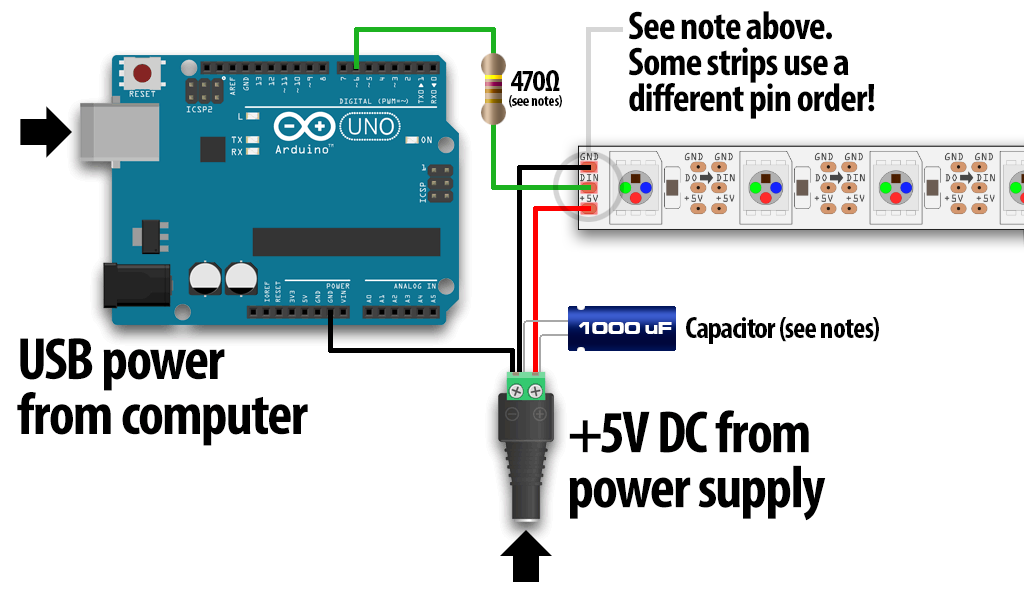From stick to strip
1. Powering strips
You can easily see by now that the example sketches used in the previous module are easily adapted for strips with more addressable LEDs.
However, the Arduino output pins do not provide enough current to drive a strip of LEDs. This is why we will be using a separate DC supply for the 1m strips we are going to connect to the Arduino UNO.

Identify the “input” end of your strip, pixel(s) or other
device; it will be labeled “DIN” or “DI” (data
input).
Then, connect
the +5V input on the strip to the + (positive) terminal on the power
supply (don’t connect to the Arduino), DIN to digital pin 6 on the
Arduino, and – (minus or GND) on the strip must connect to both the minus (–) terminal on the DC supply and a GND pin on the Arduino.
When connecting the strip to any LIVE power source or microcontroller, always CONNECT GROUND (–) BEFORE ANYTHING ELSE. Conversely, disconnect
ground last when separating. This is a good rule for any sensitive circuit you connect to a power source.
When using a DC power supply, or an especially large battery, we
recommend adding a large capacitor (1000 µF, 6.3V or higher) across the +
and – terminals. This prevents the initial onrush of current from
damaging the pixels. The capacitor buffers sudden changes in the current drawn by the strip.